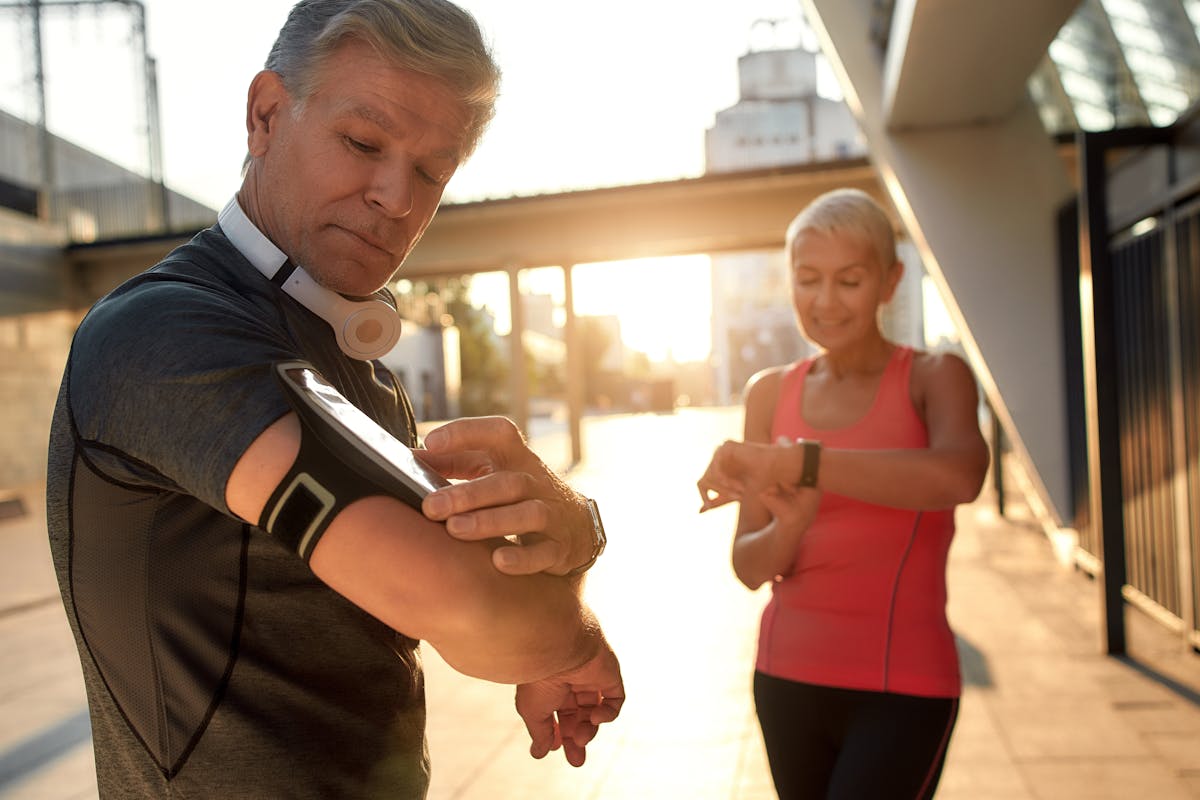Benefits of Fitness Trackers for Older Adults

Exercise is important for wellness at every age. People who commit to a regular fitness program tend to be happier and healthier. They are less likely to develop a chronic medical condition, such as diabetes or high blood pressure, and more likely to have a strong immune system. For older adults, developing a structured approach to exercise is linked to living a longer, healthier life.
At-home fitness programs are often an easy, money-saving way for older adults to stay active. They can be especially useful in areas of the country where winter makes it tougher to get around town. Whether it is cycling on a recumbent bike, doing chair yoga, or streaming a Zumba class, the options are numerous. Working out with light weights or resistance bands may also be a great addition to your fitness schedule.
One way older adults can monitor their progress toward meeting their daily fitness goals is with the use of a fitness tracker or an Apple Watch. They are available in a variety of styles and at different price points. Let’s take a look at options ranging from an easy-to-use pedometer to an Apple Watch that can monitor heart health.
Fitness Trackers and Seniors
- 3DFitBud: Pedometers aren’t always very senior friendly. Small buttons and tiny numbers can be especially challenging. But this pedometer is simple to use and can be worn on a lanyard or clipped to a belt or pocket. It will track the steps you take, no matter what direction you go—up, down, forward, or backward. Another feature that is helpful for aging eyes is the extra-large digital display. And the good news is, you won’t have to download any apps to use in conjunction with the device. At $24.99, it’s also a budget-conscious choice.
- GRV Smart Watch: Compatible with both iOS and Android systems, this smartwatch offers a variety of features. It can track calories burned, steps taken, and distance traveled. The watch also has the ability to monitor heart rate, blood oxygen saturation, and sleep quality. Prices average around $30.
- Garmin Vivosmart 4: Garmin products are a step up from more generic fitness trackers. Most are still simple to use. This particular model has a long battery life, lasting an average of seven days. Popular features include a pulse oximeter to measure oxygen saturation, REM sleep tracker, step counter, inactivity alert, and calorie tracker. You can change the settings to receive vibration alerts for texts, calls, and events. Depending on the band you choose, the cost is around $130.
Benefits of an Apple Watch for Older Adults
Apple is well-known for its smartphones, iPads, and watches. Seniors frequently opt for them because they are more intuitive and easier to use than other brands. What you might not be aware of is just how many health options the Apple Watch offers, depending on the model:
- Download the Health app to enter, organize, and track your medical information.
- Record your workouts. You can enter everything from a Pilates session to a tai chi class.
- Monitor your heart rate with the built-in Heart Rate app. If you have an Apple Watch Series 4 or later, you can use the electrical heart rate sensor, along with the ECG app, to take an electrocardiogram (ECG).
- Detect falls on the Apple Watch Series 4 or newer. This feature is another reason older adults might consider investing in an Apple Watch.
- Monitor oxygen saturation rates on the Apple Watch Series 6 or newer. For people who live with a chronic health condition, this is essential.
Consider a Mobile Monitoring Unit
One final suggestion for older adults pursuing fitness activities is to invest in a mobile monitoring unit. In the event of an emergency, a simple press of a button can connect the wearer with help. Call 1-844-203-5617 to learn more!